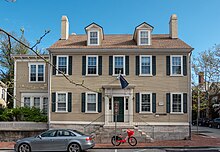
Brown University is a private Ivy League research university in Providence, Rhode Island. It is the seventh-oldest institution of higher education in the United States, founded in 1764 as the College in the English Colony of Rhode Island and Providence Plantations. One of nine colonial colleges chartered before the American Revolution, it was the first U.S. college to codify that admission and instruction of students was to be equal regardless of the religious affiliation of students.

The Kinsey Institute for Research in Sex, Gender, and Reproduction is a research institute at Indiana University. Established in Bloomington, Indiana, in 1947 as a nonprofit, the institute merged with Indiana University in 2016, "abolishing the 1947 independent incorporation absolutely and completely."
Some victims of rape or other sexual violence incidents are male. Historically, rape was thought to be, and defined as, a crime committed solely against females. This belief is still held in some parts of the world, but rape of males is now commonly criminalized and has been subject to more discussion than in the past.

The Sidney and Lois Eskenazi Museum of Art at Indiana University is an art museum at Indiana University Bloomington, which opened in 1941 as the Indiana University Museum of Art under the direction of Henry Radford Hope. The museum was intended to be the center of a “cultural crossroads,” an idea brought forth by then-Indiana University President Herman B Wells. The present museum building was designed by I.M. Pei and Partners and dedicated in 1982. The museum's collection comprises approximately 45,000 objects, with about 1,400 on display. The collection includes items ranging from ancient jewelry to paintings by Pablo Picasso and Jackson Pollock. In May 2016, after the announcement of the largest cash gift in the museum's history, the museum was renamed the Sidney and Lois Eskenazi Museum of Art in honor of Indianapolis-based philanthropists Sidney and Lois Eskenazi. The museum is located on the Indiana University Bloomington campus at 1133 E. Seventh Street.

The American Association of University Women (AAUW), officially founded in 1881, is a non-profit organization that advances equity for women and girls through advocacy, education, and research. The organization has a nationwide network of 170,000 members and supporters, 1,000 local branches, and 800 college and university partners. Its headquarters are in Washington, D.C. AAUW's CEO is Gloria L. Blackwell.
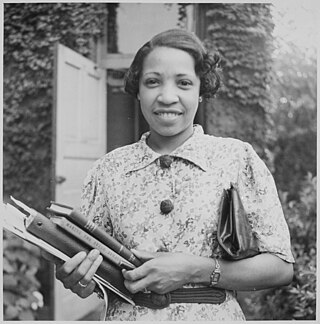
Lois Mailou Jones (1905–1998) was an artist and educator. Her work can be found in the collections of the Smithsonian American Art Museum, The Metropolitan Museum of Art, the National Museum of Women in the Arts, the Brooklyn Museum, the Museum of Fine Arts, Boston, Muscarelle Museum of Art, and The Phillips Collection. She is often associated with the Harlem Renaissance.
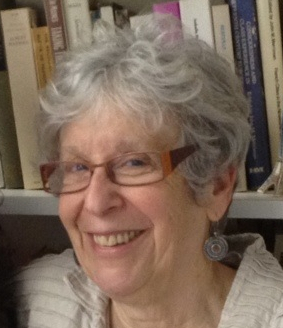
Joan Wallach Scott is an American historian of France with contributions in gender history. She is a professor emerita in the School of Social Science in the Institute for Advanced Study in Princeton, New Jersey. Scott is known for her work in feminist history and gender theory, engaging post-structural theory on these topics. Geographically, her work focuses primarily on France, and thematically she deals with how power works, the relation between language and experience, and the role and practice of historians. Her work grapples with theory's application to historical and current events, focusing on how terms are defined and how positions and identities are articulated.

Pembroke College in Brown University was the coordinate women's college for Brown University in Providence, Rhode Island. It was founded in 1891 and merged into Brown in 1971.

The Pembroke Center for Teaching and Research on Women was established in 1981 at Brown University, Providence, Rhode Island, as an interdisciplinary research center focused on gender and women. In addition to research, the center is home to archives of feminist theory and women's history as well as Brown's undergraduate Gender and Sexuality Studies concentration. Postcolonial theorist Leela Gandhi, is the Center's director, having assumed the position in July 2021.
Kay Barbara Warren is an American academic anthropologist, known for her extensive research and publications in cultural anthropology studies. Initially trained as an anthropologist specializing in field studies of Latin American and Mesoamerican indigenous cultures, Warren has also written and lectured on an array of broader anthropological topics. These include studies about the impacts on politically marginalized and indigenous communities of social movements, wars and political violence, transnationalism, and foreign aid programs. As of 2009 Warren holds an endowed chair as the Charles C. Tillinghast Jr. ’32 Professor in International Studies at Brown University,. Before joining the faculty at Brown in 2003, Warren held professorships at both Harvard and Princeton universities.
Campus sexual assault is the sexual assault, including rape, of a student while attending an institution of higher learning, such as a college or university. The victims of such assaults are more likely to be female, but any gender can be victimized. Estimates of sexual assault, which vary based on definitions and methodology, generally find that somewhere between 19–27% of college women and 6–8% of college men are sexually assaulted during their time in college.
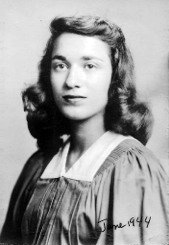
Bernice Resnick Sandler was an American women's rights activist. She is best known for being instrumental in the creation of Title IX, a portion of the Education Amendments of 1972, in conjunction with representatives Edith Green and Patsy Mink and Senator Birch Bayh in the 1970s. She has been called "the Godmother of Title IX" by The New York Times. Sandler wrote extensively about sexual and peer harassment towards women on campus, coining the phrase "the chilly campus climate".
The Janet C. Anderson Gender Resource Center is located on the Idaho State University campus. The Center addresses topics that deal with equality issues that have an effect on the community regardless of sexual dimorphism, gender, or sexual orientation.

Sarah Elizabeth Doyle was an American educator and educational reformer, noted for her roles in founding the Rhode Island School of Design and establishing women's education at Brown University.

Emma Sulkowicz is an American political activist and performance artist. While a college student, Sulkowicz developed a national reputation with the performance artwork Mattress Performance (2014–2015). In 2019, they said they had stopped making art and began a master's program in traditional Chinese medicine.
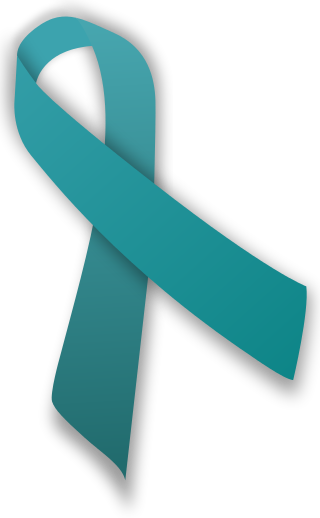
Sexual assault of LGBT people, also known as sexual and gender minorities (SGM), is a form of violence that occurs within the LGBT community. While sexual assault and other forms of interpersonal violence can occur in all forms of relationships, it is found that sexual minorities experience it at rates that are equal to or higher than their heterosexual counterparts. There is a lack of research on this specific problem for the LGBT population as a whole, but there does exist a substantial amount of research on college LGBT students who have experienced sexual assault and sexual harassment.
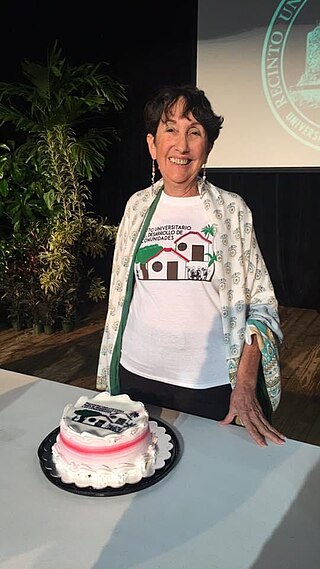
Luisa Rosario Seijo Maldonado is a Puerto Rican academic, activist, and social worker.
Elizabeth Weed is an American feminist scholar, editor and university administrator. She is the cofounder and, from 2000 to 2010, director of the Pembroke Center for Teaching and Research on Women, as well as the feminist studies journal differences, cofounded in 1989 with Naomi Schor.
The Coordinating Council for Women in History is a national professional organization for women historians in the United States. It was founded in 1969 as the Coordinating Committee on Women in the Historical Profession to promote recruitment and scholarship among women historians. It is an affiliate organization of the American Historical Association.
Amber Jamilla Musser is an English professor at the CUNY Graduate Center. Musser is also Associate Professor of Women, Gender, and Sexuality Studies at Washington University in St. Louis.
